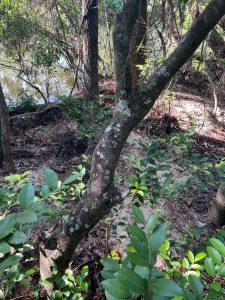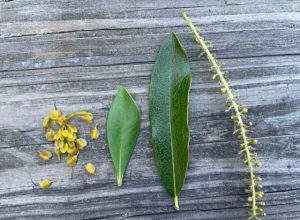
When I first started learning to identify wetland species in the field, titi (pronounced “tye-tye”) trees were among the first I could consistently recognize. They grow all over the place, so I had plenty of opportunity to see them in the wild and practice my skills.

There are two native species that go by this common name, and they live in the same habitat. Colloquially, a landscape dominated by these two species is known as a “titi swamp,” although it is not recognized as a specific ecotype. The Florida Natural Areas Index identifies titi trees as members of dome swamp and basin swamp communities. While both species have numerous common names, most people differentiate the trees using the terms “white titi” and “black titi” due to the color of their bark.

White titi (Cyrilla racemiflora) has a light bark and deep green leaves. The easiest way to identify it is through the racemes, which are linear stalks covered in small flowers that hang down from the plant. White titi blooms are favored by bees, which produce a dark honey from its pollen. Depending on where in its range the tree is growing, it may be deciduous (northern part of range) or evergreen. While the wood is not particularly valuable for lumber, in some habitats the shrubs can make up to 40% of whitetail deer diets.

Black titi (Cliftonia monophylla) has smaller, almost diamond-shaped evergreen leaves. Also known as buckwheat titi, it produces three-dimensional seeds that look like buckwheat. Honeybees and deer also utilize the flowers and leaves of black titi.
Titi trees are rarely upright with single trunks but tend to bend and twist around other vegetation in the woods. They usually grow no taller than 30 feet. Both species can be found in seepage slopes, which are higher elevation areas where the water table is close to the surface. More commonly, the trees are typically present in low-lying floodplains and shady swamps of freshwater creeks and rivers throughout northwest Florida. Often in these areas, tree roots are inundated by water for long stretches of time. Due to the abundance of water, many older titi trees will form buttressed, or broadened trunk bases. This structure provides stability to wetland tree species so they can stay upright in wet, mucky soil.
 7
7
